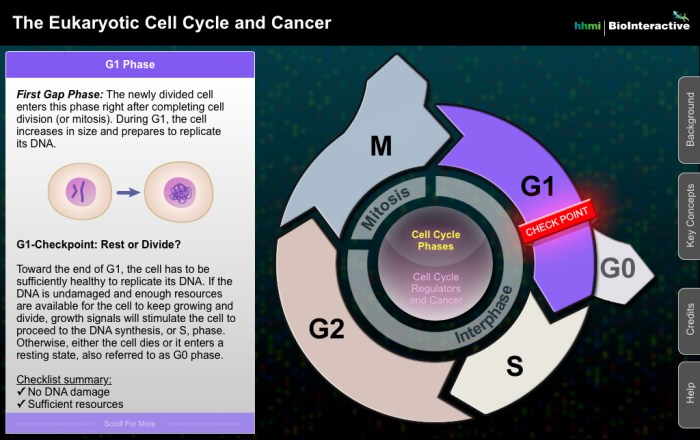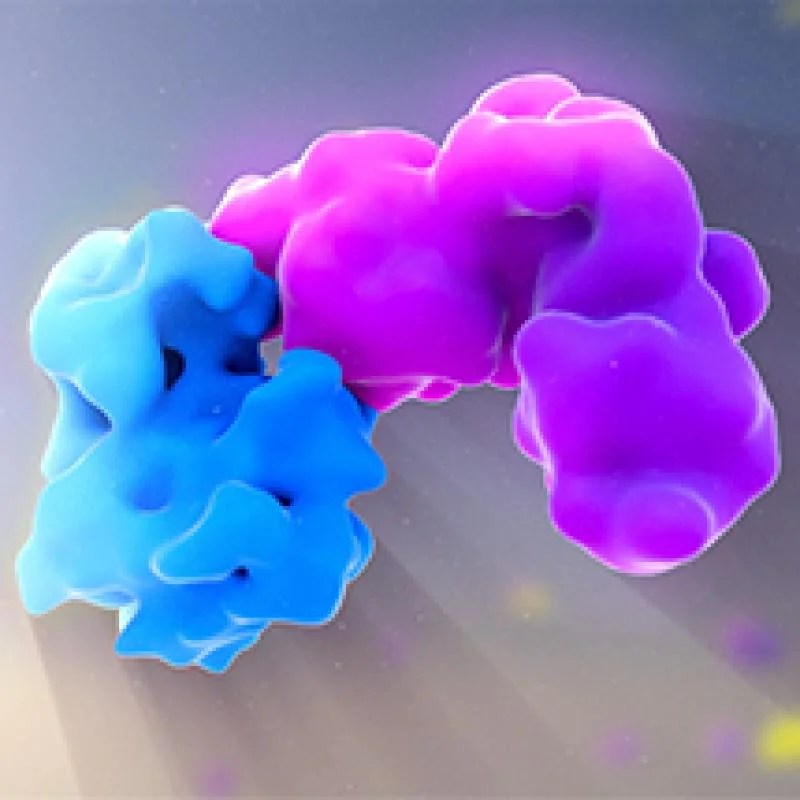HHMI Eukaryotic Cell Cycle and Cancer Key sets the stage for this enthralling narrative, offering readers a glimpse into a story that is rich in detail and brimming with originality from the outset. This comprehensive exploration delves into the intricate workings of the eukaryotic cell cycle, unraveling its key stages and highlighting the critical role of HHMI in advancing our understanding of this fundamental biological process.
As we delve deeper into the content, we will explore the profound implications of cell cycle dysregulation, examining how it can lead to the development of cancer. We will dissect the specific mechanisms by which HHMI research has identified cell cycle dysregulation in cancer, showcasing groundbreaking studies that have significantly advanced our knowledge in this field.
1. Introduction

The eukaryotic cell cycle is a highly regulated process that ensures the accurate duplication and division of cells. It is divided into four distinct stages: G1, S, G2, and M. The G1 phase is characterized by cell growth and the synthesis of proteins and organelles.
The S phase is when DNA replication occurs. The G2 phase is a period of preparation for mitosis, during which the cell checks for DNA damage and repairs any errors. The M phase is when mitosis occurs, resulting in the division of the cell into two daughter cells.
Cell cycle regulation is essential for maintaining tissue homeostasis and preventing the development of cancer. Dysregulation of the cell cycle can lead to uncontrolled cell growth and proliferation, which can result in tumor formation.
The Howard Hughes Medical Institute (HHMI) has played a major role in studying the cell cycle. HHMI-funded researchers have made significant contributions to our understanding of the molecular mechanisms that control the cell cycle and how dysregulation of these mechanisms can lead to cancer.
2. Cell Cycle Dysregulation and Cancer

Cell cycle dysregulation can occur when mutations or other genetic alterations disrupt the normal function of cell cycle checkpoints. These checkpoints are responsible for ensuring that the cell cycle proceeds in an orderly manner and that DNA damage is repaired before the cell enters mitosis.
HHMI research has identified several specific mechanisms by which cell cycle dysregulation can lead to cancer. For example, HHMI-funded researchers have shown that mutations in the tumor suppressor gene p53 can lead to uncontrolled cell growth and proliferation. p53 is a key regulator of the G1/S checkpoint, and mutations in this gene can prevent the cell from arresting the cell cycle in response to DNA damage.
Other HHMI-funded studies have shown that mutations in the oncogene cyclin D1 can lead to uncontrolled cell growth and proliferation. Cyclin D1 is a key regulator of the G1/S transition, and mutations in this gene can lead to the cell cycle progressing too quickly, resulting in the accumulation of DNA damage and the development of cancer.
3. HHMI’s Contributions to Cell Cycle Research: Hhmi Eukaryotic Cell Cycle And Cancer Key
HHMI has made significant contributions to cell cycle research. HHMI-funded researchers have identified many of the key molecules that control the cell cycle, and they have developed new methods for studying the cell cycle in living cells.
One of the most important contributions of HHMI to cell cycle research is the discovery of cyclin-dependent kinases (CDKs). CDKs are a family of enzymes that control the progression of the cell cycle. HHMI-funded researchers have shown that CDKs are activated by cyclins, which are proteins that are expressed at different stages of the cell cycle.
Another important contribution of HHMI to cell cycle research is the development of new methods for studying the cell cycle in living cells. These methods include fluorescence microscopy, which allows researchers to visualize the cell cycle in real time, and flow cytometry, which allows researchers to measure the cell cycle distribution of a population of cells.
4. Future Directions in Cell Cycle Research

Cell cycle research is a rapidly growing field, and there are many exciting new directions for future research. One important area of research is the development of new drugs that target the cell cycle. These drugs could be used to treat cancer and other diseases that are characterized by cell cycle dysregulation.
Another important area of research is the study of the cell cycle in stem cells. Stem cells are unspecialized cells that have the potential to develop into any type of cell in the body. Understanding how the cell cycle is regulated in stem cells could lead to new treatments for a variety of diseases.
Key Questions Answered
What is the eukaryotic cell cycle?
The eukaryotic cell cycle is the process by which eukaryotic cells grow and divide. It consists of four distinct stages: G1, S, G2, and M.
What is the role of HHMI in studying the cell cycle?
HHMI is a non-profit organization that supports biomedical research. It has funded numerous studies on the cell cycle, which have led to important discoveries about how the cell cycle is regulated and how its dysregulation can lead to cancer.
What are some examples of HHMI-funded studies that have advanced our understanding of cell cycle dysregulation in cancer?
One example is a study that identified a protein called p53, which plays a key role in preventing cancer. Another example is a study that showed how the loss of a protein called Rb can lead to the development of cancer.
